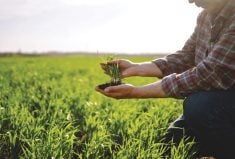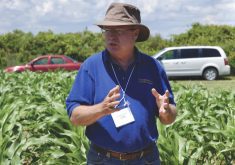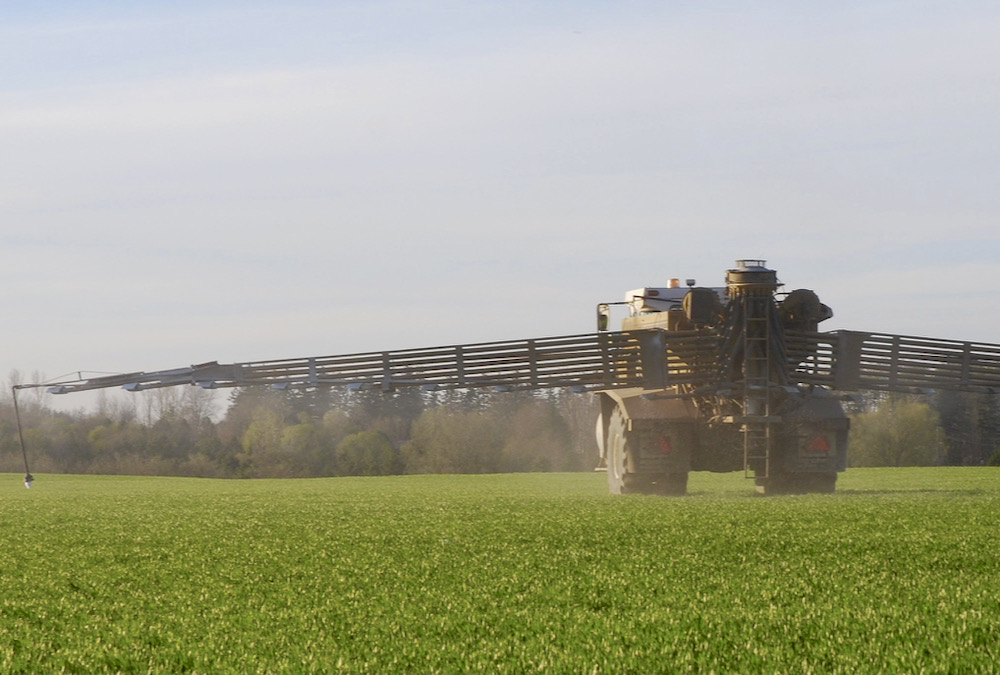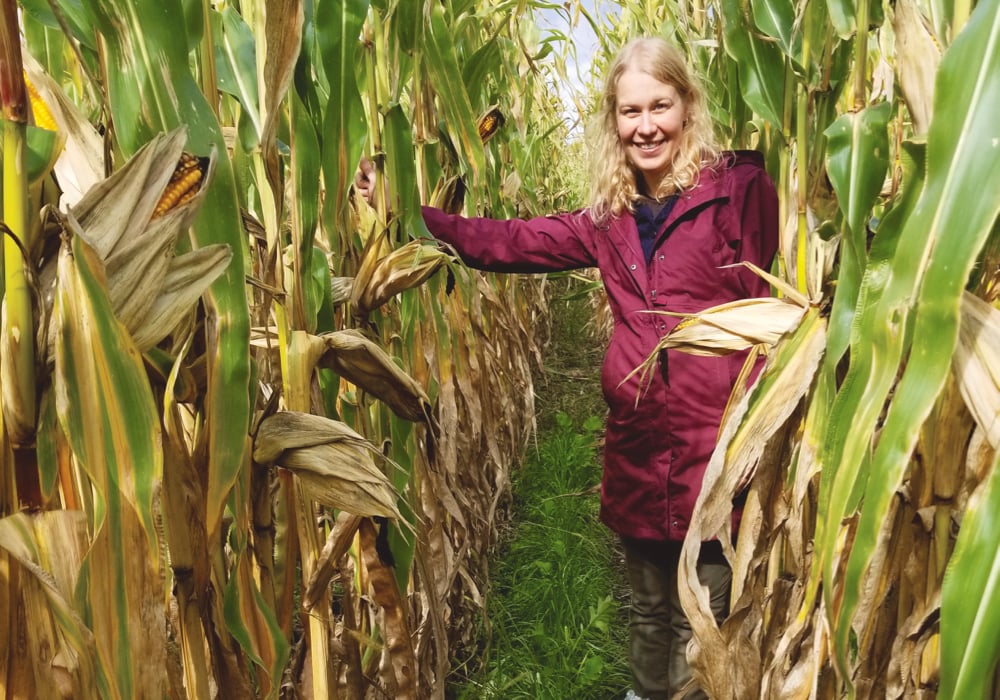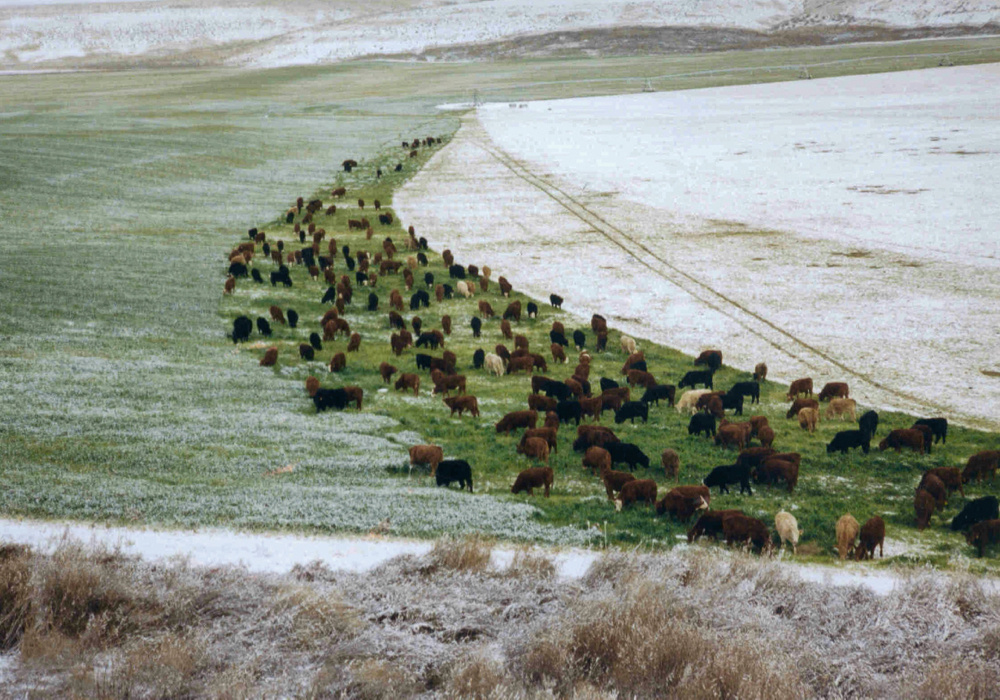Do soil tests accurately reflect how much phosphorus is actually available to plants? A long-term study at the Semiarid Prairie Agricultural Research Centre in Swift Current, Sask., suggests they don’t.
Research scientist Barbara Cade-Menun is leading a study on continuous wheat plots established in 1967. Until 1995, the plots received both nitrogen and phosphorus fertilizer; in 1995, the plots were split so one-half of each plot received both inputs while the other half received only nitrogen.
After more than 20 years, the latter plots still aren’t yielding less than the fertilized plots, although soil tests show very low concentrations of phosphorus on the no-P plots.
Read Also

Producers aren’t panicking over tariffs and trade threats
The influence of tariff and trade uncertainity on farm business decisions.
Phosphorus is measured in the plots with two soil tests — Olsen and Mehlich. In a publication on the study results between 1995 and 2010, soil test P increased on the plots that continued to receive P fertilizer and decreased on the plots that didn’t.
“The tests were at a level where a crop advisor would say you need to add fertilizer. The crops might respond to it, but because they haven’t had it in so long they’ve adapted to do without it. But our results show that the plants are still able to access P,” says Cade-Menun. “There’s been a shift in the soil chemistry over time. The question is, what’s controlling it?”
She says most soil tests aren’t built to accommodate the trickier aspects of nutrient cycling in the soil: they are based on simple soil chemistry. As part of her study, she used the Canadian Light Source synchrotron in Saskatoon to analyze the biological cycling that P undergoes in the soil.

This study doesn’t stand in isolation. Cade-Menun is involved in other permutations of this study, including a wheat-lentil rotation begun in 2008, in which she is not yet seeing P deficiencies. She has also worked with collaborators in China on similar projects and seen similar results.
It depends…
But Cade-Menun says P recommendations must be site-specific.
“It all depends on the crop — continuous wheat is not a super high-yielding rotation, and nitrogen and water limit things first,” she says. “Would I say you could stop all P everywhere and not see a problem? Absolutely not. But it does suggest that we need to adjust our approach to P fertilizer recommendations.”
So, what’s the take-home message from her study? Cade-Menun says she’s using novel chemistry to try to analyze what’s going on in the soil. Her results will guide further research steps.
In the meantime, “If P prices are really high and you skip a year, will your crop die? You’d probably be safe. But I can’t make long-term recommendations based on these plots,” she says.
Phosphorus behaviour
Don Flaten, a professor at the University of Manitoba’s soil science department, agrees that phosphorus behaviour is a “complicated world.”
He points to a range of studies that illustrate how year-to-year variability in weather and spatial variability from one plot of land to another can drastically change how a soil or crop responds to whether P is added or not.
In one 1993 study from the University of Saskatchewan, yields for an unfertilized treatment with green manures as the N source kept up with the fertilized treatments for 15 years, then declined significantly over the next 15 years. At the same time, yields for fertilized treatments increased substantially, he says.
“Eventually, a strategy of P removal without replacement will cause production to collapse,” Flaten says. “However, we also know that increasing the concentration of soil-test P in soil will increase the risk of P loss to surface water and, at some point, it will reach an agronomic optimum beyond which there’s no potential to further increase yields.”
This means it’s important to find levels of P fertility that balance crop production with environmental protection, he says.
“We have to be extremely cautious about jumping to conclusions on the basis of one year, or one place. It’s a very challenging area to work in, and the work that Barbara is doing is very, very important for those reasons,” Flaten says.
In the Northern Great Plains, some soils have what Flaten calls “extraordinary” challenges for P. For example, he’s done research showing yield benefits to adding starter P to corn. “I see this agronomic challenge of balancing P in the long term, and also providing the crop with early-season starter P, which is very important in the Northern Great Plains,” he says.
Flaten says it’s necessary for researchers to get a better idea of background soil fertility and the levels of soil-test P needed for yield response in a variety of crops.
It’s unreasonable, he says, to expect we can export P in the form of grain yields without replacing it, but the rate of replacement is not always one-for-one, because in the short term there may be P reserves that don’t come from fertilizer.
“We should be seeking ways to produce our crops with regular additions of starter P to get our crops going in cold soils, but with the minimum level of background P so that the potential for P loss to surface water is minimized,” Flaten says.
One-time applications
Adam Gurr and his farming partners run on-farm research trials for their company, Agritruth Research, near Brandon, Man.
In the spring of 2018, Gurr started a replicated field-scale trial on one-time P applications to see whether raising P levels to a more optimal range for crop production will have a long-term impact.
In 2017, the team did zone sampling on a field with historically low P levels to get a sense of how P was distributed across zones.
“We wanted a five- and 10-part per million rise in soil test P levels (respectively). To achieve that on our soil type we needed to add 350 lbs. of monoammonium phosphate (MAP) and then 700 lbs. of MAP,” Gurr explains.
The team did four replications with a one-time application of 350 lbs., four replications with a one-time application of 700 lbs., four replications of standard P application, and four replications of variable-rate P (this averaged at about 280 lbs.). The plots will receive maintenance applications over the next few seasons.
“We’re trying to understand if P depletion is a real concern on our farm,” says Gurr. “Historically, application rates haven’t kept up with removal, and some of these fields are consistently testing low to very low on soil tests. Based on the first year’s data, P depletion is very real on our farm and has shifted the yield curve down. We saw large responses to these applications in the first year but we’re going to see if that continues on into the future.”
Gurr hopes to shift to one-time P applications versus building soil test levels over time.
The project was stimulated by the lack of western Canadian research on P depletion, he says. “Some of the data I looked at was from the late 1970s… done on 30-bushel wheat and 20-bushel flax.”
Cade-Menun’s research may have significant impact if soil testing can catch up to the science of nutrient cycling. In the meantime, producers looking to evaluate phosphorus on their farms might need to follow Gurr’s lead and perform their own side-by-side comparisons.




